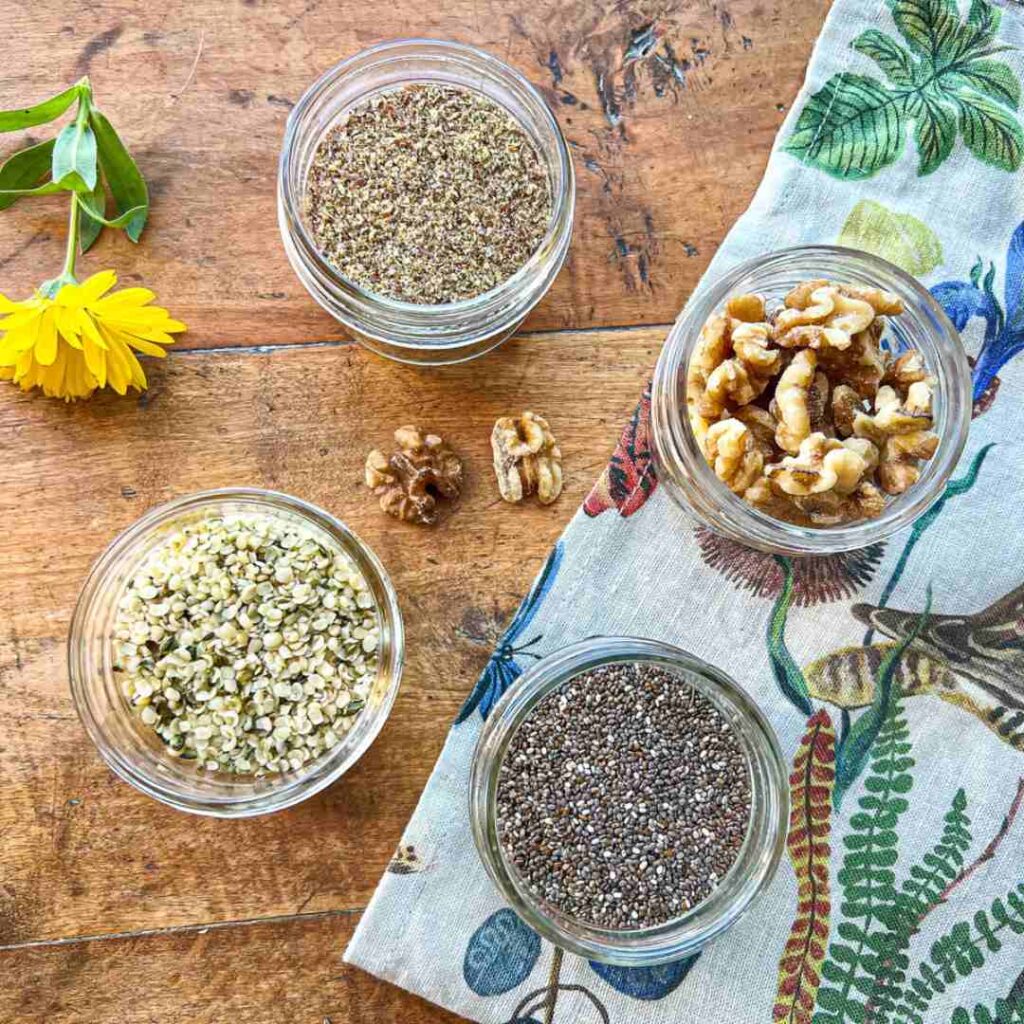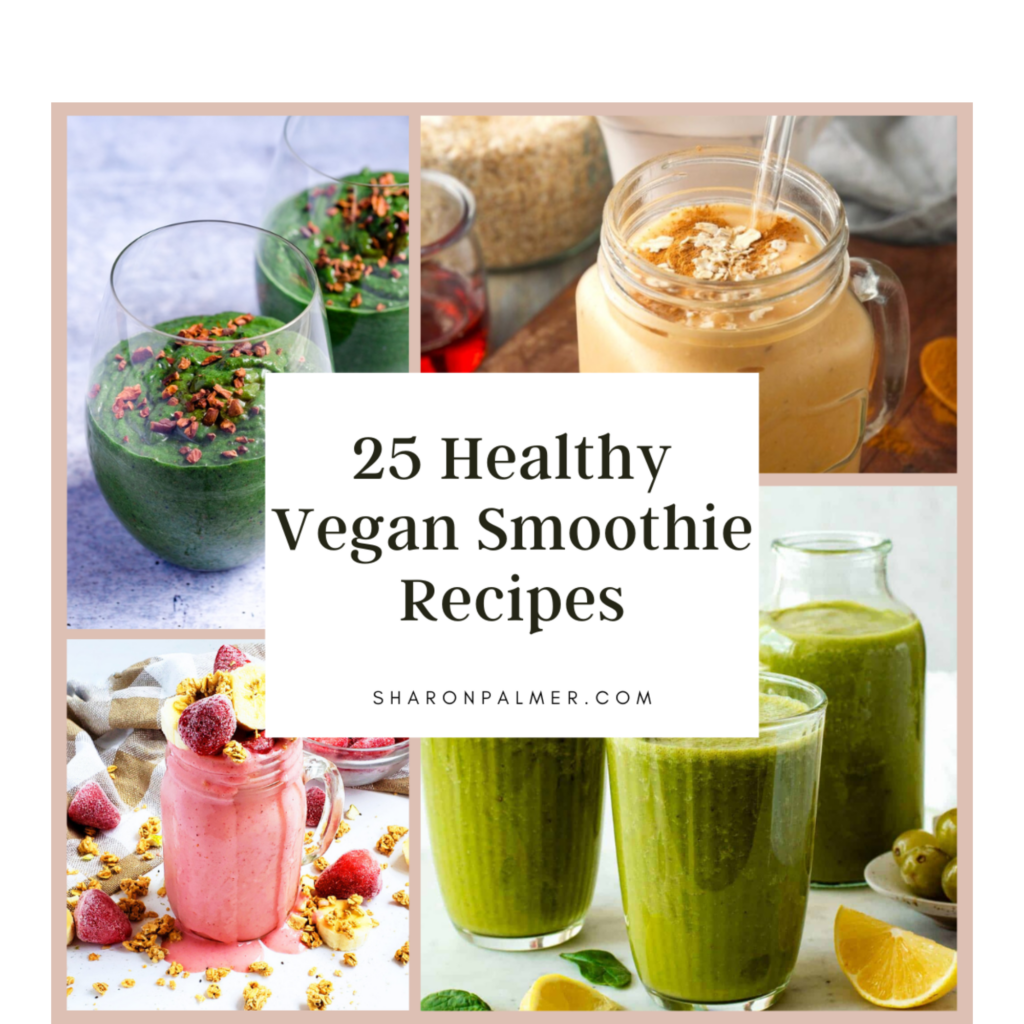Wondering about omega 3 foods from plants? Looking for vegan omega 3 foods sources? Searching for the best vegan omega 3 supplements? I’ve got your covered in this expert guide to plant-based omega 3s.
You’ve probably heard a lot about multiple omega 3 benefits. Indeed, these healthy unsaturated fatty acids called omega 3 are linked with all sorts of health benefits, including heart health, brain function, and beyond. We usually think of fish when it comes to providing omega-3 fatty acids in the diet, but did you know you can get plant-based sources of vegan omega 3, too? If you’re wondering how to ensure you’re getting enough omega-3s while eating a plant-based, vegan, or vegetarian diet, it’s really quite simple. Lucky for us, there are plenty of delicious omega 3 plant-based foods and even algae sources from which to choose.

What are Omega-3 Fatty Acids?
Omega 3 fatty acids are a type of polyunsaturated fat that provide many health benefits. These essential fatty acids play an important role in heart health, brain health, kidney function, cellular function, fighting inflammation, and eye and skin health. Types of omega 3 fatty acids include alpha linolenic acid (ALA), eicosapentaenoic acid (EPA), and docosahexaenoic acid (DHA). ALA is found in plants, while EPA and DHA are found in fatty fish, like salmon and tuna, algae, and other seafood.
ALAs are plant-based omega 3s, the only essential omega 3 fatty acid. Since our bodies can’t synthesize ALA, we must consume it through diet. Our bodies convert these short-chain omega 3s into the long-chain omega 3s EPA and DHA. Although less than 15% of ALA is converted into EPA and DHA, research has shown that most people following well planned plant-based and vegan diets can get adequate intake of omega 3s with smart planning.

How Much Omega 3 per Day?
If you’re eating a vegan diet, the likelihood of having lower EPA and DHA levels tends to be higher compared to nonvegans, so it’s important to eat plenty of ALA-rich plant foods for good conversion to EPA and DHA to help ensure you meet your omega 3 needs. The recommended dietary allowance (RDA) for ALA is 1600 milligrams for adult men and 1100 milligrams for adult women. The RDA increases for pregnant and lactating women. Some plant-based experts recommend at least 2000 milligrams of ALA per day to help ensure good conversion levels to EPA and DHA. It’s also a good idea to get some EPA and DPA—about 250 mg per day is recommended according to the Dietary Guidelines for Americans.

Vegan Omega 3 Foods
There are many sources of omega 3 (ALA-rich) plant foods to choose from, shown in the table below. Some common foods that are high in vegan omega 3 (ALA) are flax seeds, hemp seeds, chia seeds, walnuts, and soyfoods.
| Plant-Based Sources of ALA | ||
| Food Item | Serving Size | ALA content (mg) |
| Flax Seed Oil | 1 Tbsp | 7,258 |
| Flax Seeds | 1 oz | 4,614 |
| Hemp Seeds | 1 oz | 1,567 |
| Chia Seeds | 1 oz | 4,596 |
| Uncle Sam’s Original cereal | 1 cup | 3,300 |
| Walnuts | 1 oz | 2,570 |
| Canola Oil | 1 oz | 1,279 |
| Tofu, firm | ½ cup | 733 |
| Soy oil | 1 oz | 933 |
| Soybeans, cooked | ½ cup | 820 |
| Wheat germ | 1 oz | 108 |
| Brussels Sprouts | ½ cup | 80 |
| Cauliflower, cooked | ½ cup | 104 |
| Seaweed, spirulina, dried | 2 Tbsp | 116 |
Vegan Omega 3 Supplements
The best vegan omega 3 supplement for plant-based, long-chain omega 3’s is algae (or algal oil)—where fish get their omega-3s in the food chain to begin with. Algae vegan omega 3 supplements are an option for both vegetarian- and vegan- friendly sources of EPA and DHA. Getting your omega-3s this way benefits you as well as the planet, because it reduces the practice of over-fishing, destroying coral reefs, and climate change associated with fish consumption and fish oil production. This supplement may be especially appropriate for pregnant and lactating women, as well as children. As with all dietary supplements, discuss them with your health care professional before starting a new regimen. High-quality brands of algae supplements include Deva Vegan, Ovega-3, Nordic Naturals Algae Omega, Life Extension Vegetarian DHA, and Testa Omega-3.

Tips for Boosting Omega 3 EPA/DHA Levels
One way to boost omega-3s in your diet is by reducing your intake of omega 6s. Studies have shown that the ALA conversion rate to EPA and DHA improves when less dietary omega 6s are consumed. Omega 6s are found in soy, canola, cotton, sunflower, and safflower oils. Swap these out for other plant oils, such as olive oil, avocado oil, or walnut oil more often. Another way to boost higher conversion of ALA to EPA and DHA is by consuming higher levels of ALA—about 2000 milligrams of ALA per day.

Consuming enough omega-3s each day may help promote optimal health. Give the many plant-rich sources of ALA more space on your plate, and consider an algae supplement to help you hit the mark each day. For more information on meeting plant-based nutrients of concern, check out this blog, and download my FREE Go Vegan Toolkit.
For more blogs on meeting your nutrient needs, check out the following:
How to Get Vegan Calcium Sources
How to Power Up on Plant Proteins
Meeting Your Nutrient Needs on a Vegan Diet
How to Get Vitamin B12 on a Vegan Diet
Written by Sharon Palmer, MSFS, RDN and Michelle Naragon, Dietetic Intern.
References:
Higdon, J. & Pauling, L. (2003). Essential Fatty Acids. Oregon State University. https://lpi.oregonstate.edu/mic/other-nutrients/essential-fatty-acids
Lane, K., Derbyshire, E., Li, W., & Brennan, C. (2014). Bioavailability and Potential Uses of Vegetarian Sources of Omega-3 Fatty Acids: A Review of Literature. National Library of Medicine. https://pubmed.ncbi.nlm.nih.gov/24261532/
Link, R. (2017). The 7 Best Plant Sources of Omega-3 Fatty Acids. Healthline. https://www.healthline.com/nutrition/7-plant-sources-of-omega-3s
Levy, J. (2019). Omega-3 Deficiency Symptoms + 3 Steps to Overcome Them. Dr. Axe. https://draxe.com/nutrition/omega-3-deficiency/
N.A. (2019). Aquatic Food Webs. National Ocean and Atmosphere Administration. https://www.noaa.gov/education/resource-collections/marine-life/aquatic-food-webs
N.A. (2020). Omega-3 Fatty Acids. National Institutes of Health. https://ods.od.nih.gov/factsheets/Omega3FattyAcids-Consumer/
N.A. (n.d.). Omega-3 Fatty Acids: An Essential Contribution. Harvard School of Public Health. https://www.hsph.harvard.edu/nutritionsource/what-should-you-eat/fats-and-cholesterol/types-of-fat/omega-3-fats/
Turner, H. (n.d.). Comparing Algae-Based DHA+EPA Supplements. Today’s Dietitian. https://www.todaysdietitian.com/enewsletter/enews_0917_01.shtml










